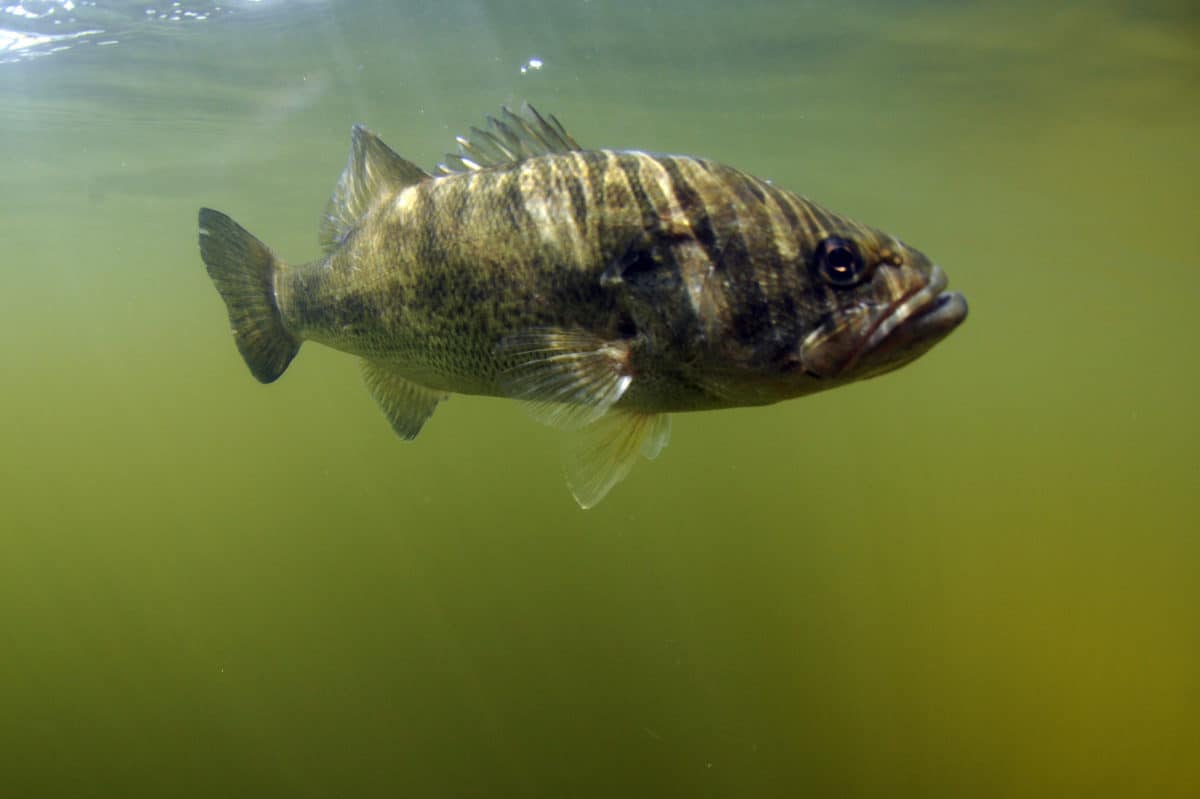Bass fishing is arguably the most popular fishing sport in America. They’re in just about every state in the Union, and with options from chasing Peacock Bass in Florida to black bass in Lake Champlain, they offer a unique, diverse fishing option for all anglers.
Especially fly anglers.
I caught my first bass on the fly on a popper, and ever since then, I look forward to the late spring when the largemouth spawn at a reservoir near my parents’ home in Southern Utah.
It’s common to catch a dozen or more 18-inch bucketmouths on topwater flies, and it’s some of the most enjoyable fishing I do each year.
So, if I can be successful catching bass on the fly in Utah, it’s a safe bet to say that you’ll have even more success in the Lone Star State.
In a nutshell, to catch bass on the fly in Texas, use a 6wt, 9′ fly rod with a disc drag reel that has low-to-no startup inertia. When it comes to flies, stick to big poppers, streamers, and multi-fly rigs as your core. Consider a shorter leader and an aggressive forward taper line or a sink tip of you’re fishing deep. Presentations should mimic prey or trigger aggressive fish.
With all that in mind, let’s take a deeper look at what you need to know in order to fly fish for bass in Texas.
Can you catch bass on the fly?
The short answer here is yes. The longer answer is that I’m surprised more fly anglers I know don’t chase bass on the fly. We’ll get into this later, but they’re a ton of fun to chase on topwater flies.
Catching bass on the fly is a fairly simple endeavor, and it’s not much different than targeting trout, especially if you spend a lot of time fishing for trout in lakes and ponds.
A lot of the techniques and flies are the same, with the biggest difference coming from how you present flies to bass instead of trout.
Why should I fly fish for bass?
Fly fishing for bass is an absolute blast. I grew up fishing small trout streams here in the Rockies, and for a good chunk of my youth, I didn’t know that bass even existed. My grandfather and father both made sure I was a trout purist, through-and-through.
As I grew up though, I found all these other fish to catch. Much to my dad and grandpa’s chagrin, I started chasing panfish and bass on the fly. While they dismissed it as “easy fishing anyone can do” I kept having more fun than I ought to be allowed to.
I think that’s what keeps me coming back to bass fishing. Not that it’s so incredibly easy – because it can be frustrating – but because it’s just so much fun.
Pulling a popper near a stand of weeds, holding my breath while I wait for a smallmouth to rocket up and slam the topwater fly is right up there with watching big trout smack grasshoppers in the late summer.
I’ll also add here that fly fishing for bass helps turn you into a better angler. The best anglers I know are the one who can catch fish in any setting, at any time of year.
The folks who focus just on one species, or one specific technique, usually don’t have the ability to catch fish regardless of where they’re at, or what they’re fishing for.
Now, I’m not trying to discount the joy these anglers get from only fishing dry flies for trout. All I’m saying is, if your goal is to become a great fly angler, regardless of species, then you need to start chasing some bass on the fly.
You’ll learn more about predatory fish behavior, fly presentation, hook sets, and fighting fish, that you can then apply to trout fishing, or even offshore fishing.
What gear do I need to catch bass?
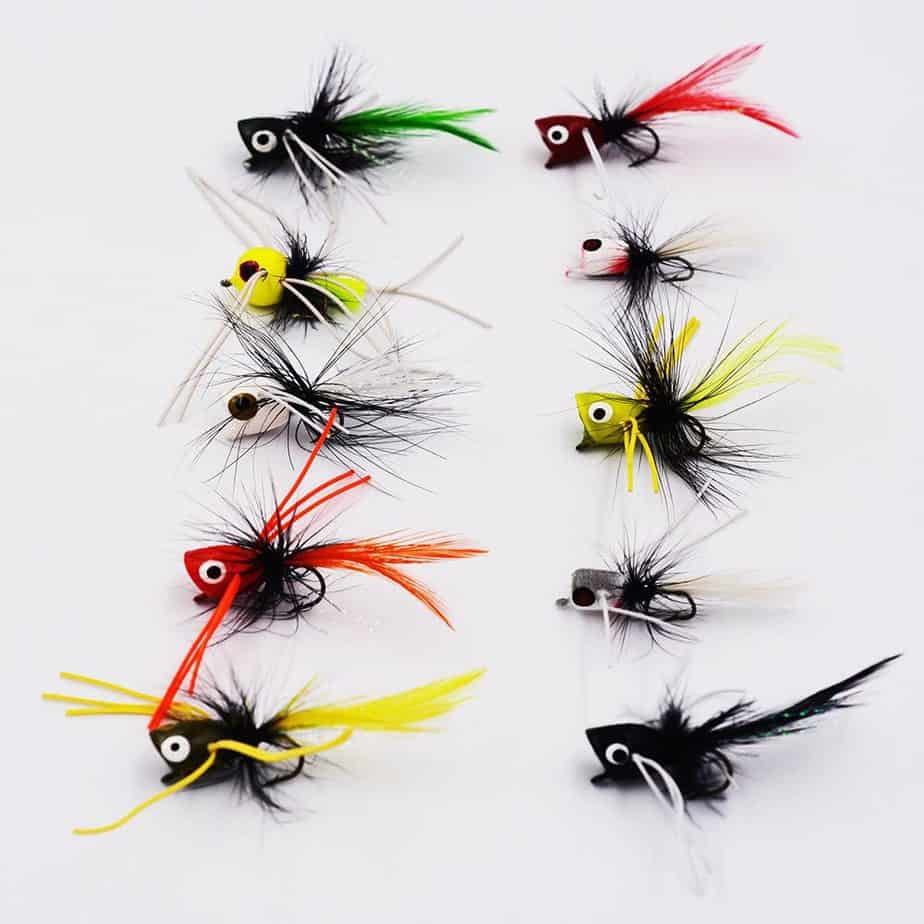
I don’t like fishing for bass with anything less than a 9’ 6wt rod and a solid disc-drag reel. A 6wt is a great choice of rod because it’s stiff enough to turn over big poppers, streamers, and multi-fly rigs that bass love. It’s not too stiff or heavy, though, to tire your arm out after a day of casting.
The reel choice here is more preference based, but when a largemouth goes on a long run, or smallies run off with my popper, I like being able to put the brakes on these fish.
Some folks like to let them running, palming a click-and-pawl reel and controlling the fish that way. While that’s how I prefer to fight trout, there’s a lot to be said for how well a disc-drag reel stops big bass right in their tracks.
Aside from the rod and reel, I’d recommend 2-3x fluorocarbon leader, a net, and some longer hemostats to help get hooks out of the bass’s mouth.
What is the best weight fly rod?
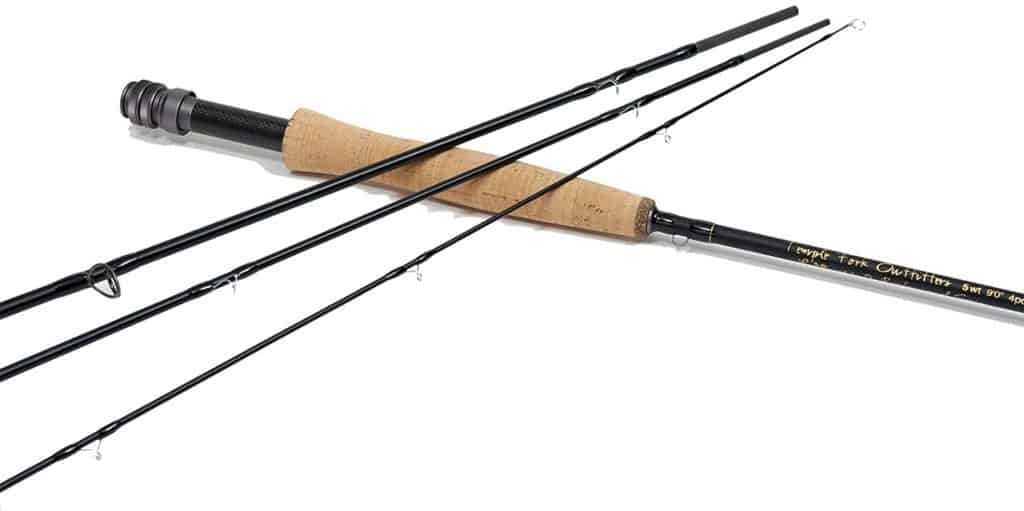
As mentioned above, a 6wt is the best weight fly rod for bass fishing. I love a 6wt because it’s the perfect balance of power and strength, while still offering easy casting.
A lot of bigger rods require precise timing to coax the best performance from them, and a day of throwing an 8wt around will tire your arm out enough to make it fall right off.
If you feel like a 6wt is just too small, though, look at a 7wt. This weight class of rod is severely underrated, and offers the perfect compromise between the heavy-duty status of the 8wt, and the somewhat lighter punch that most 6wt rods pack.
What is the best reel?
Generally speaking, a disc-drag reel is the best reel to use for bass fishing. You want a reel that has low-to-no startup inertia, meaning that the drag doesn’t stutter when it starts to engage.
I’ve had more than a few big fish break my flies off because I used a cheaper reel with a substandard drag system.
Orvis, Hardy, Hatch, and Redington all make solid disc-drag reels are great price points. You don’t need to drop $300-$400 to get a good reel for chasing bass on the fly.
What type and size flies for largemouth?
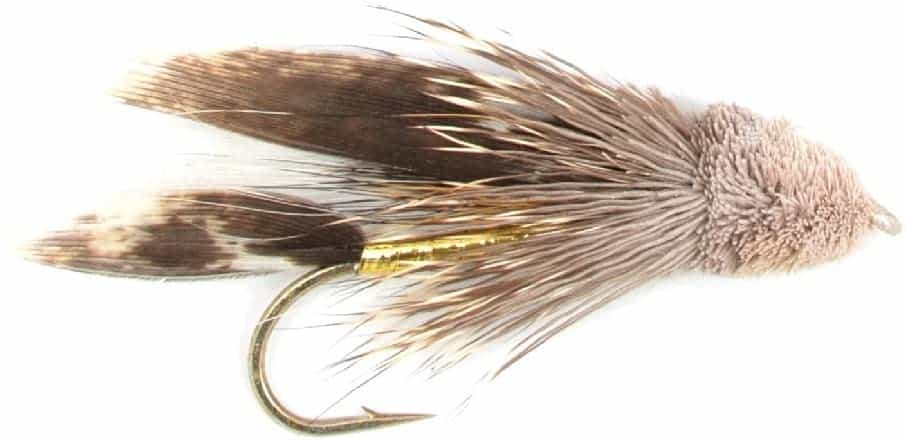
Largemouth are a ton of fun to catch on the fly. They don’t hit as hard a smallmouth, but they definitely put up a longer-lasting fight.While you can theoretically catch largemouth on any fly, I’ve found that bigger flies tend to work the best here.
Since largemouth are notorious for simply engulfing their prey, it’s easy to miss bites when fishing for them. Putting a bigger fly on gives you more real estate when setting the hook on these subtle takes.
If I had to pick just a few flies for largemouth, though, this is what I’d include:
- Muddler Minnow, sizes 2-6
- Clouser Minnow, sizes 2/0-6
- Woolly Bugger, sizes 2-10
- Zuddler, sizes 2-8
- BlockHead poppers, sizes 2-8
These flies are all solid options for trout and bass, but I like them for largemouth in particular because they all have one thing in common – they’re designed to trigger predatory responses from fish.
The Muddler Minnow, while an older pattern, has a lot of flash in it, which we all know attracts largemouth. Clouser Minnows don’t have the same flash, but they cut through the water in a way that few other baitfish imitations can match.
The Woolly Bugger and Zuddler are both flies tied with tons of hair and fur, giving them lifelike movement in the water that’s sure to trigger even the most stubborn of bucketmouths into eating – so long as you present it correctly.
What type and size flies for smallmouth?
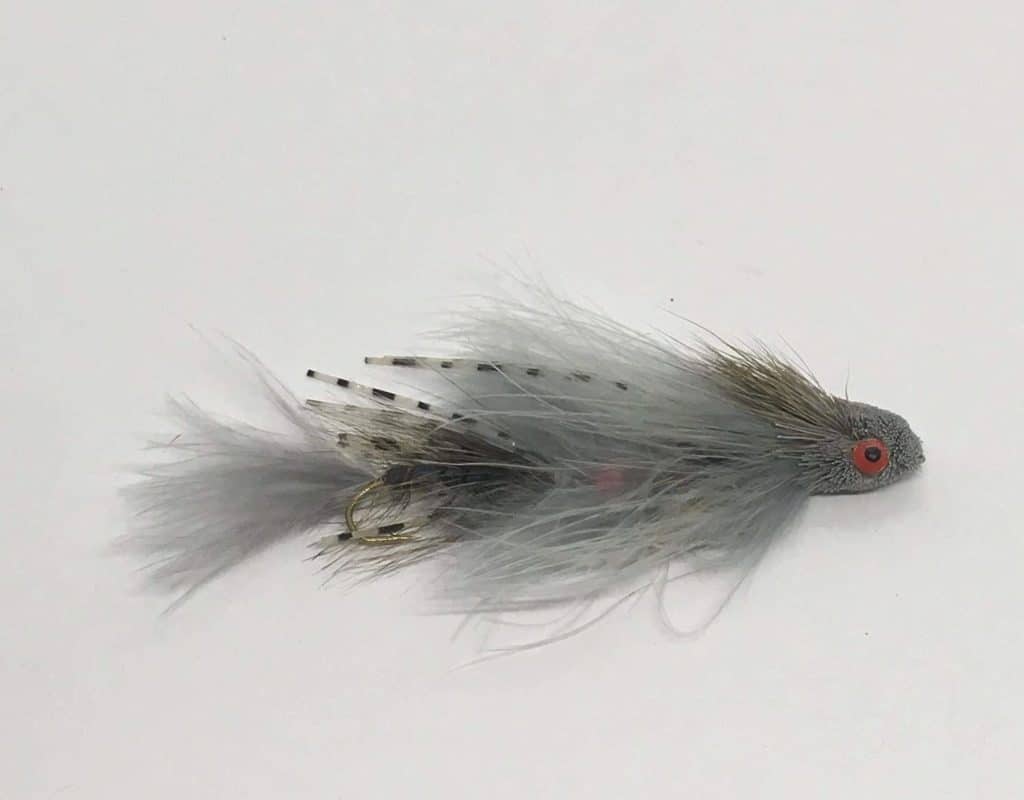
Smallmouth are generally more aggressive, in that they’ll hit flies like a freight train. So, you get to use flies that push more water and demand more attention if you’re specifically targeting smallmouth.
My favorite flies for these bad boys include:
- BlockHead poppers, sizes 4-10
- Round poppers, sizes 4-10
- White Bunny Leeches, sizes 6-12
- Slumpbuster, sizes 2/0-6
- Sex Dungeon, sizes 2/0-6
What you’ll notice here is that I’ve included a lot of bugs that have bigger size ranges, and that’s on purpose. I’ve found that I have more success with smallmouth on the fly when I use flies that push a lot of water and create tons of noise beneath the surface (or on top of it).
The poppers included here are a bit smaller so as to increase your hookup rate when fishing on top. It’s easy to throw a popper that’s just too big for smallies to get their mouth around, and nothing is more frustrating than getting tons of chances at hooking fish – but not putting any in the net.
How do you rig a fly rod for bass fishing?
This is one of the questions I get most often. And the answer is the same as with any other fishing-related question – it depends.
Generally speaking, you can rig a rod for bass fishing the same as you would for trout. But if you want to see higher success with bass on a fly rod, then I’d recommend making some tweaks.
Shorter Leader
First off, don’t use as long a leader as you generally do for trout. Most trout rigs are 9 feet long, at least, and taper down to 5x. That’s the go-to setup here in my corner of the Rockies, and in most places I’ve ever fished for trout.
For bass, a 7.5 foot leader is better. I usually go with a 3 or 4x fluorocarbon leader, too. The shorter length and increased diameter of this leader gives you a few advantages over one that’s long and fine.
Namely, your cast has to turn over less material with a shorter leader. This creates tighter loops, especially when you’re fishing big flies.
Long leaders have a tendency to create a “hinge” in the middle when you use them with bigger flies – especially poppers.
On both your front and back cast, you’ll feel your line almost dip as the fly – which travels slower than the leader through the air – catches up with the leader.
Now, this may not seem like a big deal, but it makes a difference for accuracy, too. A shorter leader means you have less room for the leader to wiggle and throw your fly out of the small window in the weeds you were aiming for.
Between accuracy and ease of casting, it just makes sense to go with a short, thick leader. As long as it’s a fluorocarbon leader, I haven’t found any bass that have been leader-shy in the way that trout get.
Fly Line
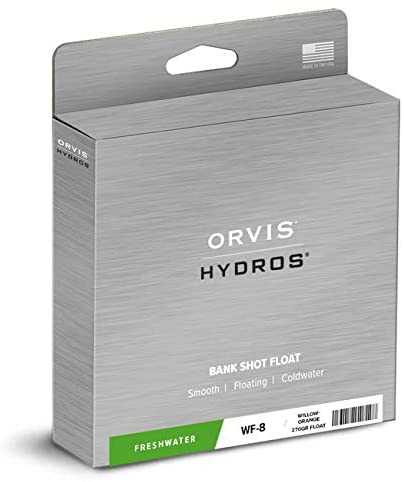
Once you have the leader figured out, I’d recommend a fly line with an aggressive forward taper. If you’re fishing bugs on the surface, a floating line like the Orvis Bank Shot is fantastic.
This line has all the weight up near the first 20 feet, so it picks up and moves big bugs with ease.
If you’re not fishing on top, and want to get your flies deep, then a sink-tip line will be your best friend.
I prefer the sink-tip lines that have a sink rate of 5-7 inches per second, followed by intermediate line (this is a fly line designed to float a few inches below the surface). This keeps your flies in the strike zone a lot longer than simply sinking them off a floating line.
Drop Shot
Lastly, you can also do up a dropshot rig on a fly rod, if you so desire. In my corner of the Rockies, this is often referred to as a “bounce” rig, but it’s no different than a dropshot rig on conventional gear.
I like to tie an extra bit of 3 or 4x tippet with a blood knot. I leave one tag end long, and use that to tie my fly on. Then, I’ll tie a few overhand knots in the rest of the line below there, attach my split shot, and lob the rig out there.
Casting this rig is far from graceful, but it’s produced nice largemouth for me at places like Lake Powell.
How do you fly fish for bass in a river?
It’s the same process as fly fishing for big trout in a river. Cast a fast-sinking streamer to likely holding water, and retrieve your line quickly, in a manner that imitates a baitfish. This triggers a bass’s natural predatory instinct, and results in you putting a good bass in the net.
How do you fly fish for bass in a pond?
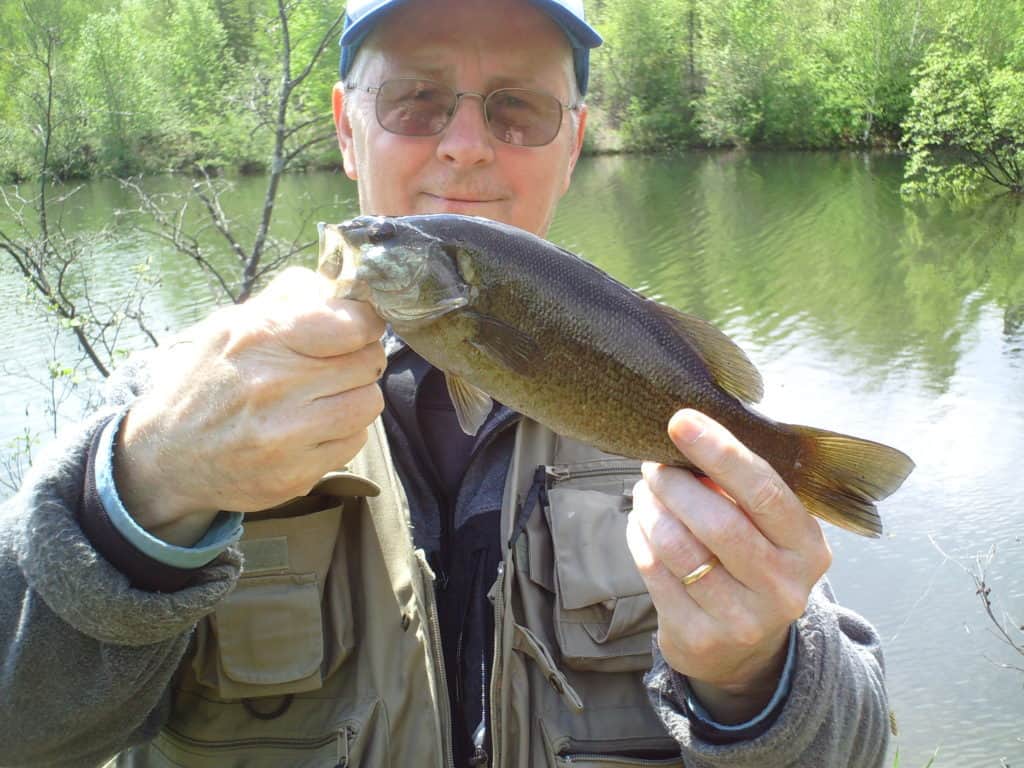
I really enjoy throwing poppers on ponds, and not just because that’s fun to say. If you can find ponds that have clear delineation between shallow and deep water, a lot of structure, tall weeds, or a combination of all three, you can strategically fish poppers here to elicit strikes from hungry bass.
If you’re on a pond where these features aren’t readily visible, or you know that the fish like to hang out where it’s deep, then I’d throw a dropshot rig or some sinking line and work a slow, but deliberate, retrieve back towards shore.
What are the best presentations for bass?
Bass are predators, so they’ll always react well to imitations of injured baitfish. If you can get your flies within their sight and make that fly look like a small fish trying to escape, you have a great chance of hooking up.
The same goes for fishing topwater. Try to make your poppers look like a frog, mouse, or other animal struggling to get out of the water and back to land.
Conclusion
Fly fishing for bass is one of the most rewarding experiences you can find, and one that will definitely make you a better angler. It’s not that different from using conventional gear, and once you land a big one on the fly rod, you may not touch that baitcaster ever again.

